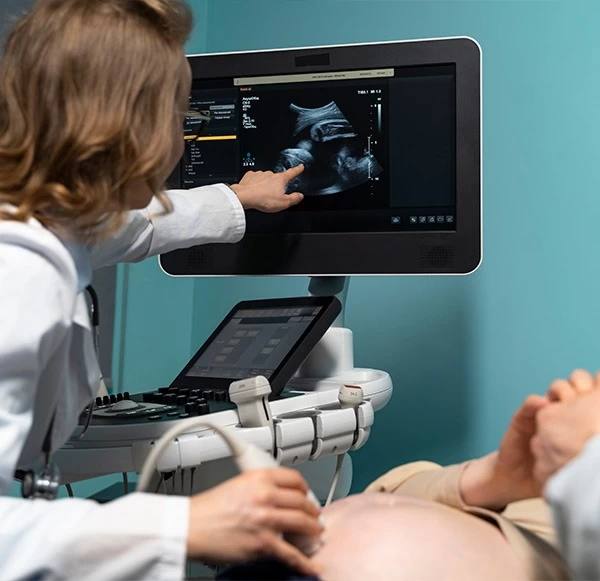- Email Us

You may not notice a little fatigue, dry mouth, or slow healing of a cut at first. But diabetes often develops quietly until it begins to affect your eyes, nerves, and heart. As per the International Diabetes Federation (IDF), as of 2024, around 589 million adults worldwide are living with diabetes, and the number is still rising. Moreover, experts say nearly half of them remain undiagnosed.
Over 4 in 10 cases remain undiagnosed (IDF 2025), highlighting the urgent need for early screening. World Diabetes Day reminds you that early testing can change everything. A simple HbA1c blood test can reveal your risk long before symptoms manifest, so you take preventive steps on time. But what other tests should you go for, how to prepare for them, and which lab to choose? Scroll down to find out.
World Diabetes Day is observed on November 14 every year. It focuses on awareness about the condition, early detection, and the right ways to prevent it with different lifestyle habits. Many people discover diabetes only after serious complications develop, such as heart disease or kidney failure. With timely screening, you will catch blood sugar changes early and adjust your lifestyle accordingly.
Doctors rely on a few specific blood tests to confirm and monitor diabetes. Each test measures blood sugar from a different angle to give the doctor the complete picture of health and the main cause behind it. The most common ones are listed in the table below:
Test Name | Purpose | When It Is Used |
Fasting Blood Sugar (FBS) | Checks sugar after an overnight fast | For initial screening |
Postprandial (PP) Test | Tests the sugar levels two hours after a meal | To check how your body handles glucose |
HbA1c Blood Test | Shows your average blood sugar over three months | For diagnosis and long-term control |
Oral Glucose Tolerance Test (OGTT) | Detects sugar response after a glucose drink | For confirming borderline or gestational diabetes |
These tests together confirm whether your blood sugar control is stable or trending toward diabetes.
The HbA1c blood test checks the amount of glucose attached to your red blood cells. Since red cells live for about three months, the result shows your average sugar level over that period.
This test stands out because you do not need to fast. It detects long-term patterns instead of a single reading, which helps your doctor judge how effectively your body manages glucose.
A higher HbA1c result suggests your sugar levels have remained elevated for weeks or months, even if your daily readings appear normal. Doctors also use this test to monitor treatment progress and adjust medication or diet plans. So, search NABL-accredited pathlabs near me and book your next blood sugar test right away!
The PP test measures blood sugar exactly two hours after a meal. It shows how your body reacts to food and how quickly insulin brings sugar levels back to normal.
Parameter | PP Test | HbA1c Test |
What It Measures | Sugar level two hours after eating | Average sugar over three months |
Preparation Needed | Requires fasting and then a meal | No fasting required |
When It Is Useful | Detecting early glucose spikes | Tracking long-term diabetes control |
Typical turn-around | Same-day result | Result within 24 hours |
Both tests complement each other. The PP test shows immediate sugar response, whereas the HbA1c test reveals your overall pattern.
You should plan a diabetes screening if you notice:
Persistent thirst or frequent urination
Sudden or unexplained weight loss
Blurred or cloudy vision
Fatigue that does not improve with rest
Frequent infections or slow-healing wounds
Testing is also advised for:
Adults above 35 years of age
Individuals with high cholesterol or high blood pressure
Women who have had gestational diabetes or polycystic ovary syndrome
People with a family history of diabetes
Doctors recommend:
Once a year, if your blood sugar levels are normal
Every six months, if you are at higher risk
Every three months, for those already diagnosed, to track control through the HbA1c test
For convenience, you can book lab tests online and schedule home collection without travel. For more convenience, search for pathlabs near me and find trusted centers that deliver accurate results quickly.
Before testing, follow these simple steps:
For the PP test:
Fast overnight for 8-12 hours
Eat a regular meal when advised by your doctor
Return to the lab exactly two hours after eating for sample collection
For the HbA1c blood test:
No fasting or special preparation is required
Drink water and maintain your usual diet and routine
This World Diabetes Day is your chance to act, not wait. Go for an HbA1c blood test to understand how your body manages sugar over time and prevent the problem easily with the right strategies. Mahajan Imaging & Labs offers advanced diabetes screening, accurate reports, and expert consultation. You can even book lab tests online with ease and include the PP test in your screening plan. Take the next step this World Diabetes Day and schedule your HbA1c and PP tests with us to move towards a healthier tomorrow.
Also read: Understanding Your Blood Test Report: A Layman’s Guide




